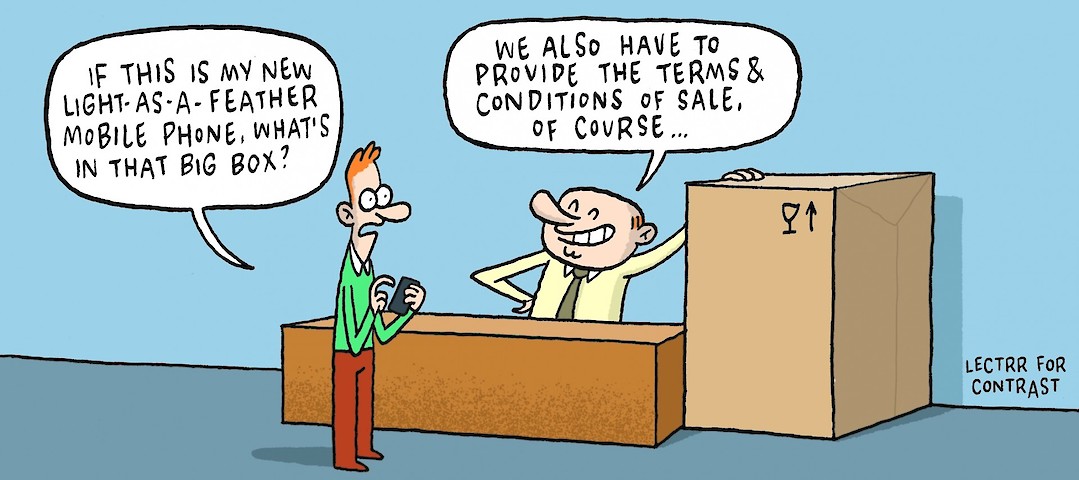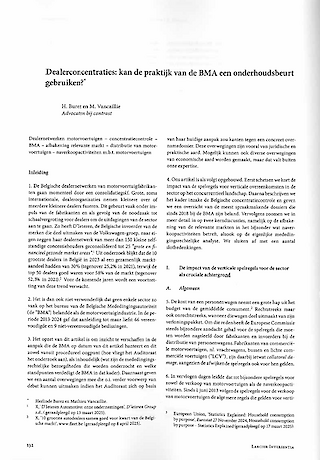In the Picture

New playing rules for distance selling
July 2014Imagine.
Four months after a customer bought a product via your webshop, he wants to return the product and "get his money back" on the basis of his right of withdrawal. He believes that he, as a consumer, has 12 months to do so, because at the time of purchase you did not give him the legally-required information about his withdrawal right. Upon hearing this, you fall right out of your chair. You sought legal advice back when you started up your webshop, and your legal advisor recommended that, with each order, you give notice - in a separately framed text, printed in bold - that the customer has a right of withdrawal for . . . 14 days. According to your customer, however, that no longer suffices in order to fulfil your statutory obligations.
A short check online instructs you that new rules about distance selling (and the right of withdrawal) have indeed been published in the Belgian Official Journal.
A brief clarification.
At the end of 2013, the Belgian legislature gave the distance selling regulations a facelift by amending Articles 45 to 48 of the Market Practices Law of 6 April 2010. In addition, the rules on distance selling were brought into line with the European Consumer Rights Directive 2011/83/EU of 25 October 2011. That directive introduces a full harmonization of distance selling throughout the European Union. On 30 December 2013, the amended Market Practices Act was published in the Belgian Official Journal and incorporated as Book VI into the Economic Law Code, more specifically as the new Articles VI.45 to VI.53 of the Economic Law Code. The new rules entered into effect on 31 May 2014.
The amendments include the following: (i) more extensive information duties, (ii) change in the information that must be communicated about the right of withdrawal (use of model forms), (iii) adapted reimbursement terms in the event of exercise of the withdrawal right, and (iv) modified sanctions for failing to fulfil the information obligations.
Concerning the right of withdrawal, the earlier mandatory form of mention – i.e. within a separate frame, printed in bold – is no longer necessary. However, the conditions, the period (minimum of 14 days) and the methods for exercising the right of withdrawal still have to be clearly and expressly communicated. For this purpose, optional use may be made of model form 1, which is provided for in the law. Along with this information, the consumer must always (obligatorily) receive a model form 2 in order to be able to exercise his right of withdrawal. Beyond this, the consumer can optionally be offered other ways to exercise his withdrawal right (for example, via an online application).
In the event of failure to comply with these information duties (for example, when model form 2 is not provided), the consumer’s right of withdrawal is extended to 12 months instead of 14 days. However, the 14-day period shall begin to run as soon as all of the information obligations have been satisfied, even if that only occurs some time after delivery of the product.
If a consumer exercises his right of withdrawal, the merchant must reimburse the price and the standard shipping costs within a period of 14 days at the latest after receipt of the goods, or after the consumer has demonstrated that he sent the goods.
Concretely.
What steps must you take in order to be in line with the new Belgian regulations on distance selling?
- Look carefully at what information must be made available to the consumer, as well as when and how this must be done.
- Always take account of the information duties incorporated into other relevant legislation (e.g. in Article XII.6 of the Economic Law Code (electronic economy)).
- The proper application of the regulations on distance selling is often a black-and-white matter, and is actually sanctioned by the courts. In case of doubt, seek specialized advice.
- Even if you only sell products or services to consumers in a store (thus not at a distance), you must take account of the general information duties contained in the new Article VI.2 of the Economic Law Code.
Want to know more?
Consult here an example of the statutorily-required model forms 1 and 2.











